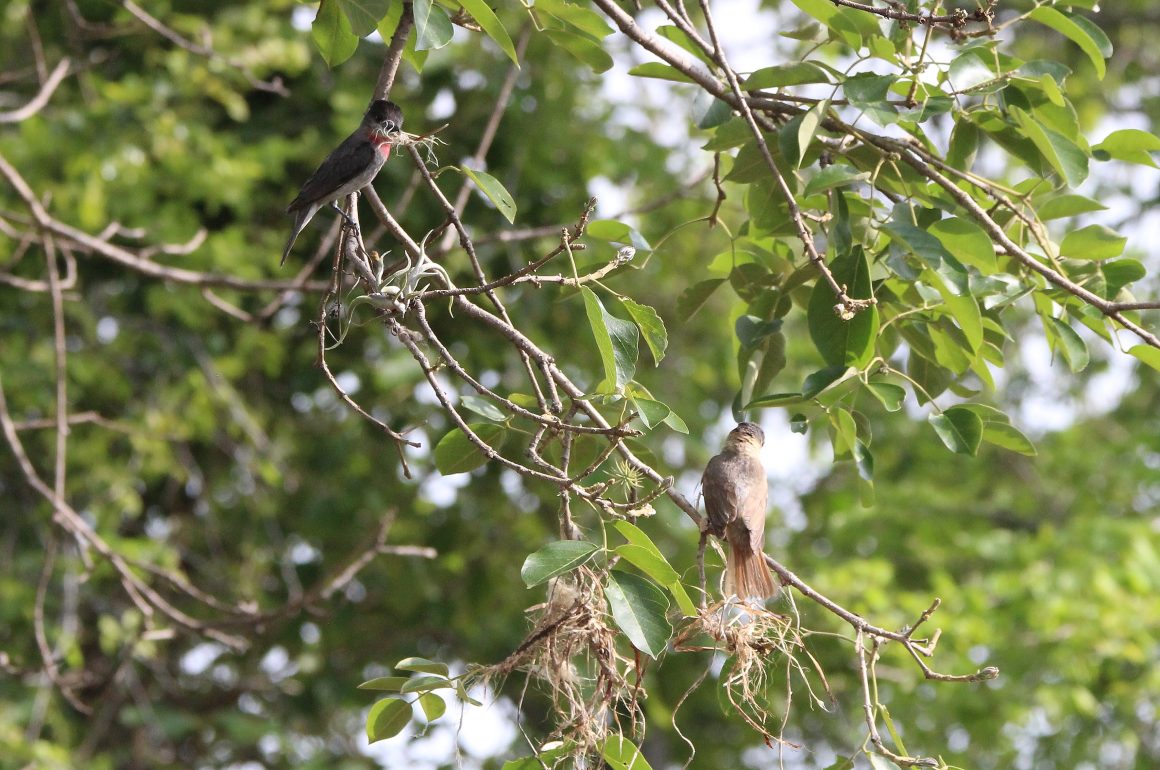
Well, it is July again. July is the month when some of Mexico’s best birders (and I don’t use that term lightly) ask me to take them to the tiny town of Paso Ancho, in the hopes of seeing the ever-so-scarce and little-studied Sinaloa Martin.
July is also the month when I take take unsuspecting gringos, who have no prior knowledge of the Sinaloa Martin, to Paso Ancho. Partly because they need to see it, even though they don’t know that yet. And partly because I want to see it.
I also take them to Paso Ancho, because it is in be Río Balsas basin. This area offers Mexico’s greatest concentration of endemics, as well as very few species an American birder might have already seen up north. And many of these endemics are real beauties, much more so than the highland endemics I could otherwise show visitors.
An American photographic activist (I would have said photo-journalist, but he preferred “activist”), named Steve, had asked me to take him birding in late June. So I took him to Paso Ancho, of course. I wanted him to see all those beautiful endemics. That I also wanted to see if the Martins could be found there as early as late June, was just a side-benefit.
As it happens, there were no Martins to be found that day. I’ll still probably try again next June, as this June has been the driest and hottest in memory, and in my experience, summer rains make it much more likely that one will see the Sinaloa Martin. Fortunately, Steve had no complaints, as he was equally delighted with the birds that did show up, such as the Sulphur-bellied Flycatcher, Red-breasted Chat, and by far the largest number of Russet-crowned Motmots that I have ever seen in a single day.
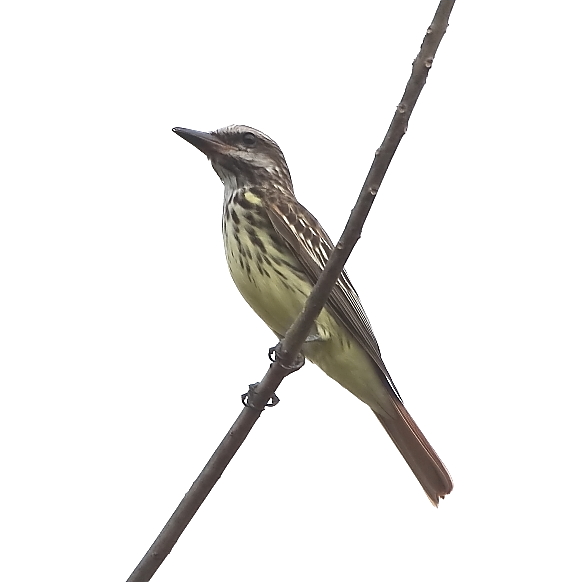
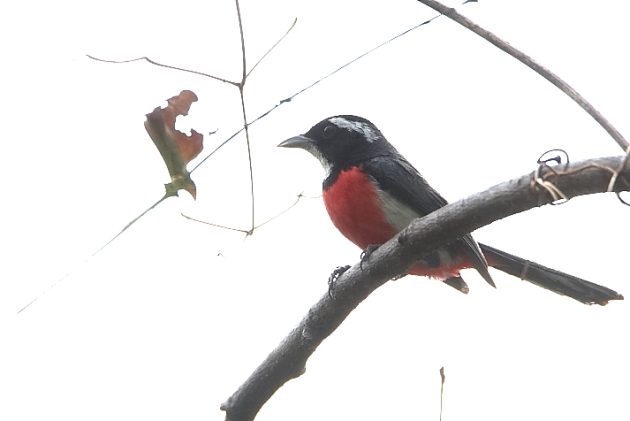
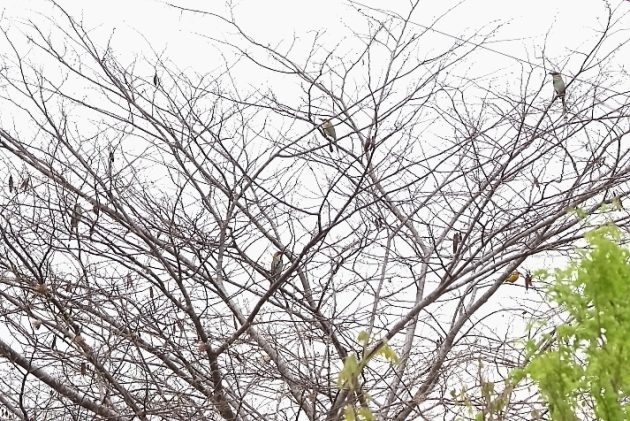
I know this photo isn’t very helpful, but there are four Motmots in that one tree.
Yellow-winged Caciques and Streak-backed Orioles were busy building their impressive hanging nests. And for the first time, I saw a Bronzed Cowbird (which lays its eggs in other birds’ nests) checking out one of these nests. The scene of the crime, as it were.
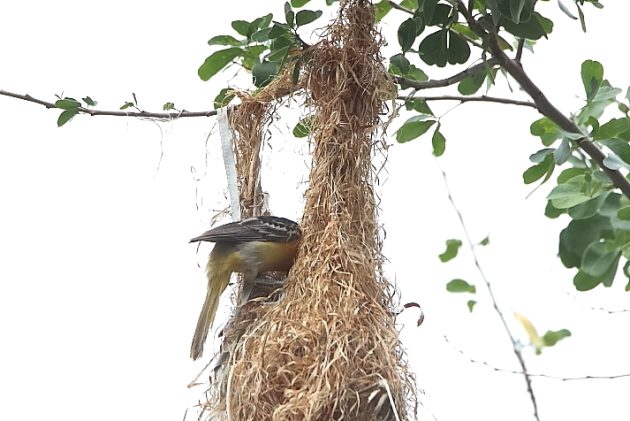
This female Streak-backed Oriole is the rightful nest owner.
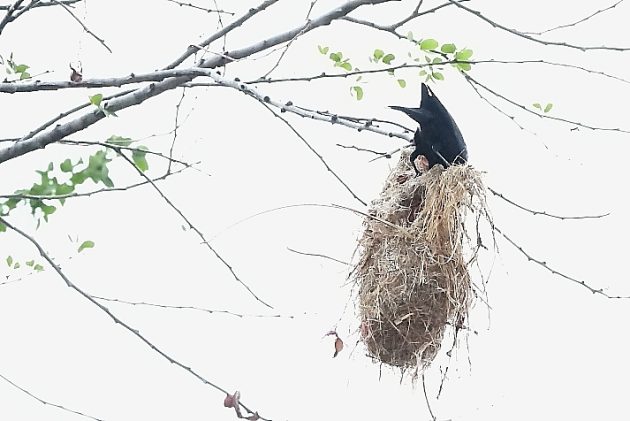
This Bronzed Cowbird definitely is not.
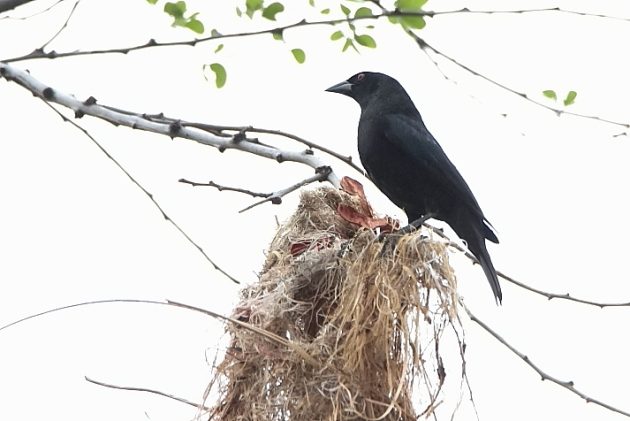
There was also a Berylline Hummingbird feasting on a fallen mango. I don’t recall having seen a hummingbird sipping fruit juice before.
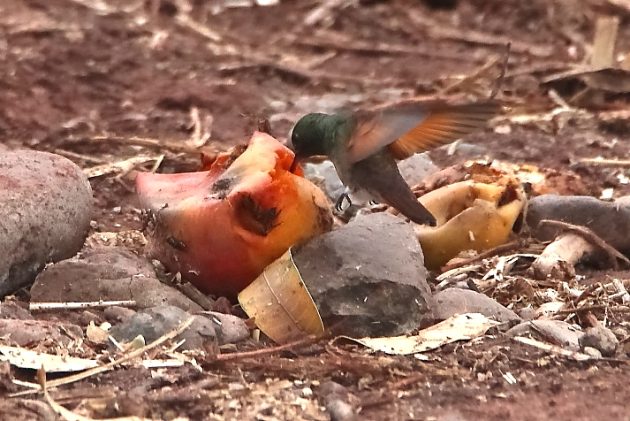
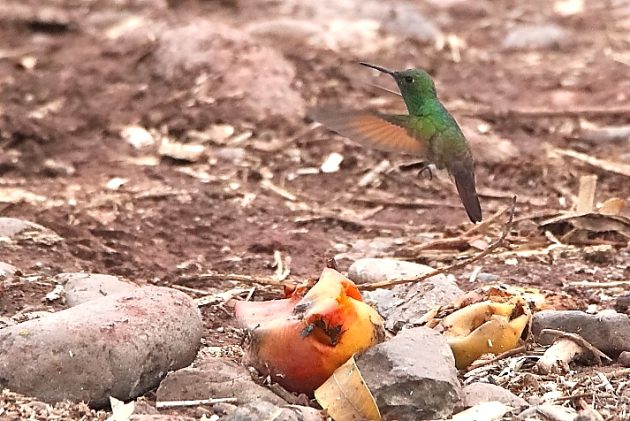
Still, this first outing was a bit of a disappointment. Not for Steve; he seemed completely satisfied. But I knew that quite a few charismatic species had failed to turn up. Perhaps it was all that heat and drought.
Two weeks later, it was a young math and science teacher from Oregon named Brent who asked me to take him with me. And since the above-mentioned reasons still stand, I took him to Paso Ancho as well. I hoped for a more complete survey of the site’s species. And this time, it seemed that all the luck we hadn’t had in June showed up. Perhaps the fact that our summer rains had finally kicked in helped.
Now, I’m not a “positive confession” kind of Pentecostal. But it did seem like all we had to do was mention a species we would like to see, and there it was. Brent mentioned, just before we reached our destination, how much he would like to see a Motmot. And what was our first bird seen after getting out of the car? A Russet-crowned Motmot, of course.
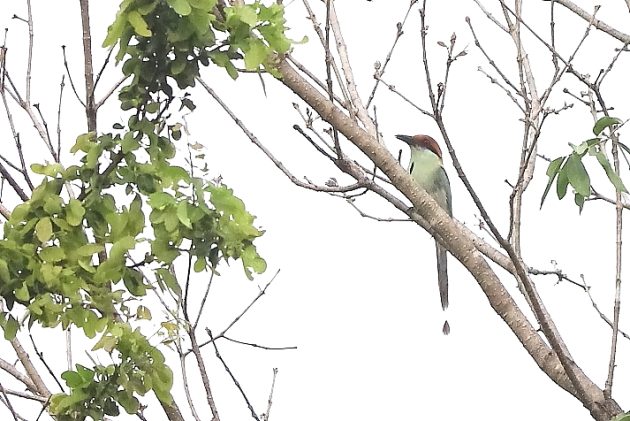
I told him that occasionally, with luck, I might hear a Laughing Falcon there. Seeing one? That’s a much a taller order. But it wasn’t long before we saw one, sitting calmly in a rather distant tree. A couple more minutes and it started its hilarious call: HAW-haw! HAW-haw! HAW-haw!
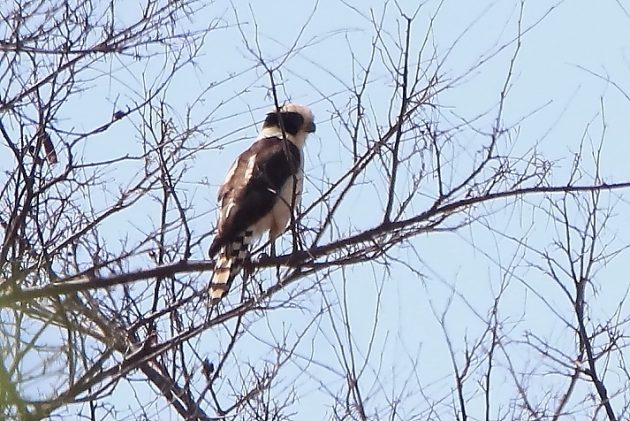
I had mentioned a higher site to Brent, and that I often see Lesser Roadrunners there; but that I never see them in Paso Ancho. Except that this time, we did see one in Paso Ancho, my very first. Curiously, it was perched in a tree, rather than running on a road.
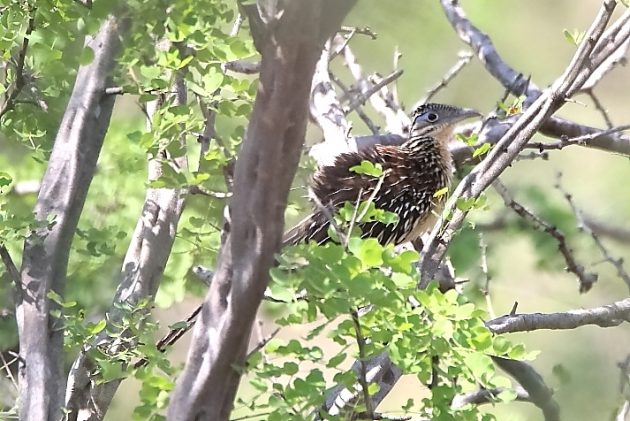
I told him not to expect to see the Banded Wrens that can be heard from all directions in the area. They are always heard there, but rarely seen. And yet, we saw four of them. I could have said the same for the site’s somewhat rarer Happy Wrens. We got a good look at one of them as well, although I didn’t manage to get a photo from that brief encounter.
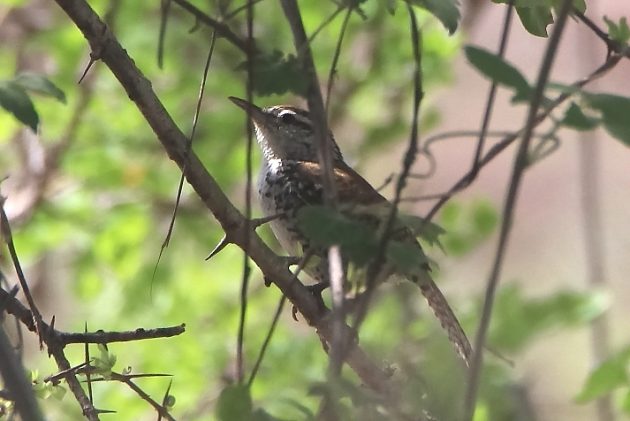
The often heard, but rarely seen, Banded Wren.
I mentioned that I used to see Ferruginous Pygmy-Owls there, but that they had been shy of late. One turned up, to prove me wrong again.
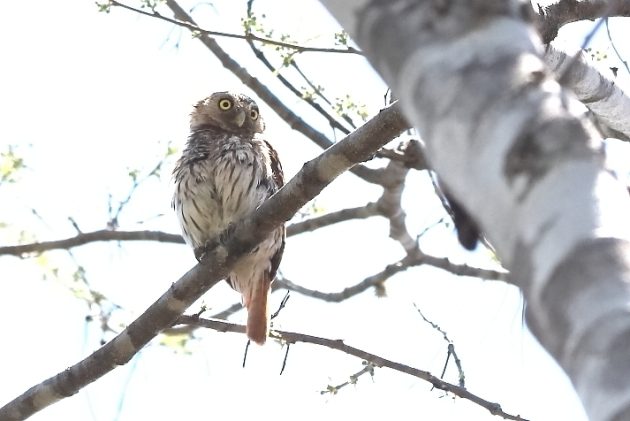
A Mangrove Cuckoo flew quickly across our path. Mangrove Cuckoos aren’t supposed to travel that far inland, but they do, rather often. And Brent was thrilled with a pair of Squirrel Cuckoos that perched near us. I hadn’t warned him about those, because they are common enough here for me to take for granted. It’s good to take outsiders with you every so often — they remind you to keep your sense of wonder about the common birds.
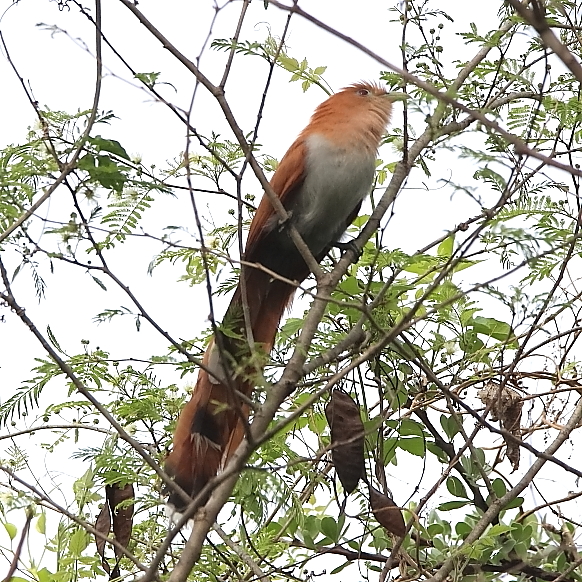
The same could be said about so many other species. Black-chested and Stripe-headed Sparrows, Yellow-winged Caciques, Northern Beardless-Tyrannulets, Thick-billed Kingbirds, Golden-cheeked Woodpeckers, Varied Buntings, they all showed up. And of course, no visit to Paso Ancho would be complete without at least one male Orange-breasted Bunting.
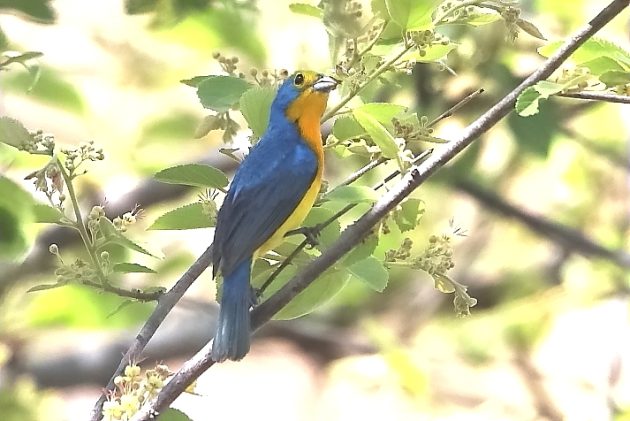
There were Rose-throated Becards building nests near where we saw that first Motmot. In the avian world, with its many deadbeat dads, it is always nice to see a father pulling his weight.
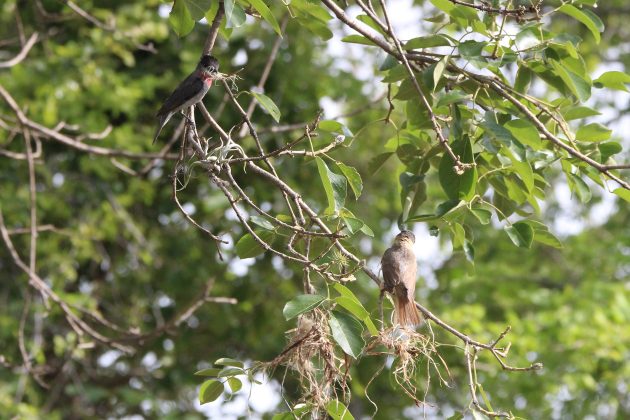
Oh yes… And the Sinaloa Martins? Why, indeed, they were there. Not the 40-80 that I had seen last year. But I was happy with the 15 that we did see.
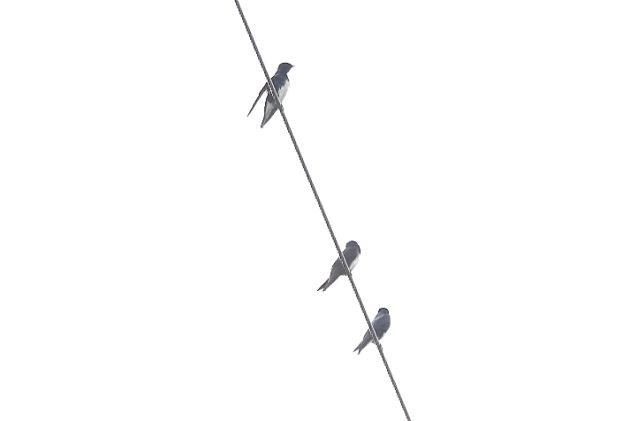








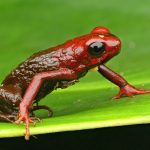
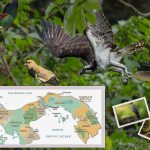
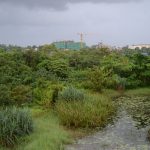

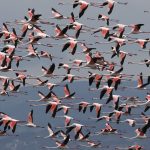
Leave a Comment